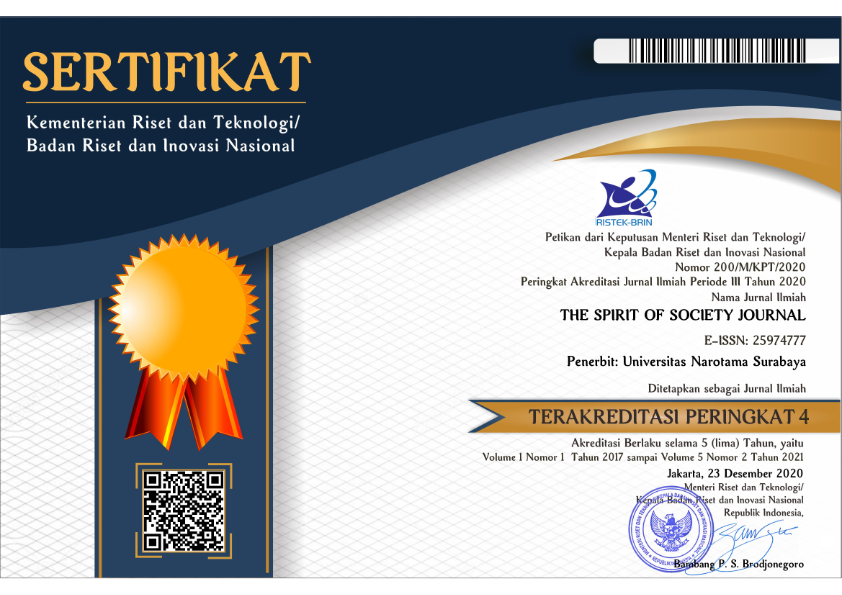The Value of the Diagonal Shear Stress of the Masonry on Laboratory Testing
Abstract
The earthquake resulted in structural, non-structural damage, material and non-material losses and even death. Material losses in the form of damage to houses, household furniture, loss of property. Non-material losses in the form of loss of peace, comfort. The above damage is anticipated by increasing the brick wall elements which contribute well to increasing its capacity to carry the combined external forces that occur during the earthquake. In particular, increasing the strength of a brick wall can be done by selecting the quality of the wall constituent materials and designing the brick wall. This research is addressed to investigate the value of the diagonal shear stress of the masonry brick due to the external forces. The testing was carried out as laboratory testing by using the preference model and method. The results of this study is that normal bricks reach 1500 to 1800 Kgf, and the normal diagonal shear stress reaches 1.6603788 Kg/cm2, while initial cracking at 400 to 800 Kgf, later cracking at 800 to 1,000 Kgf and failing at 1,500 – 1,800 Kgf.
Downloads
References
Abdul Rochman, S. B. (2012). S TRENGTH A ND C HARACTERISTICS O F R ED B RICK M ADE O F W ASTE S IDOARJO L APINDO M UD. 12(2), 121–125.
Ahmad, N. (2008). Development of a Seismic Risk/Loss Model for Mansehra City , Pakistan. Development, DECEMBER 2008, 112. http://www.roseschool.it/page/218/year-2008.html
ASTM E 519-02. (2002). Standard Test Method for Diagonal Tension (Shear) in Masonry Assemblages. American Society for Testing Materials, 5. https://doi.org/10.1520/E0519
Binda, L. (2008). Learning from Failure Long-term Behaviour of Heavy Masonry Structures.
Chopra, A. K. (2012). Dynamics Of Structures.
El-dakhakhni, W. (2017). Three-Strut Model for Concrete Masonry-Infilled Steel Frames. 9445(February 2003). https://doi.org/10.1061/(ASCE)0733-9445(2003)129
Frapanti, S., & Tarigan, J. (2017). Analisa Portal Yang Memperhitungkan Kekakuan dinding Batu Bata dari Berbagai Negara.
Giannopoulos, I. P. (2009). Seismic Assessment of a RC Building according to FEMA 356 and Eurocode 8. 16th Conference on Concrete, 21–23.
Mahlil, Abdullah, M. A. (2014). Alternatif perkuatan dinding untuk mencegah kehancuran brittle. 3(4), 77–86.
Page, A. W. (1981). Biaxial Compressive Strength of Brick Masonry. Proceedings of the Institution of Civil Engineers (London). Part 1 - Design & Construction, 71(pt 2), 893–906. https://doi.org/10.1680/iicep.1981.1825
Priestley, M. J. N., & Paulay, T. (1992). Seismic Design Of Reinforced Concrate and Masonry Buildings. In Administrative Science Quarterly (Vol. 56, Issue 1). https://doi.org/10.1080/1369801X.2015.1079499
Raharja, S., As’ad, S., & Sunarmasto. (2013). Pengaruh Penggunaan Abu Sekam Padi Sebagai Bahan Pengganti Sebagian Semen Terhadap Kuat Tekan Dan Modulus Elastisitas Beton Kinerja Tinggi. E-Jurnal Matriks Teknik Sipil, 1(4), 503–510.
Rana, R. (2004). PUSHOVER ANALYSIS OF A 19 STORY CONCRETE SHEAR WALL. 133.
Torres, B., Varona, F. B., Baeza, F. J., Bru, D., & Ivorra, S. (2020). Study on retrofitted masonry elements under shear using digital image correlation. Sensors (Switzerland), 20(7). https://doi.org/10.3390/s20072122
Ullah, S., Farooq, S. H., Usman, M., Ullah, B., Hussain, M., & Hanif, A. (2022). In-Plane Seismic Strengthening of Brick Masonry Using Steel and Plastic Meshes. Materials, 15(11). https://doi.org/10.3390/ma15114013
Copyright (c) 2023 THE SPIRIT OF SOCIETY JOURNAL : International Journal of Society Development and Engagement

This work is licensed under a Creative Commons Attribution-ShareAlike 4.0 International License.












